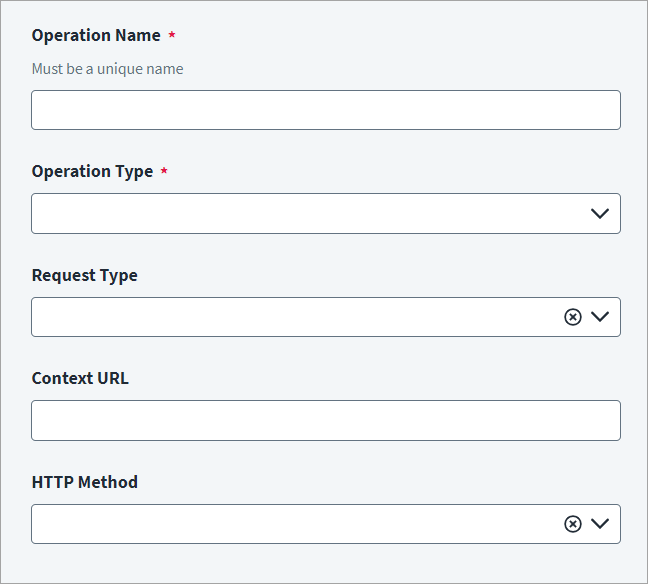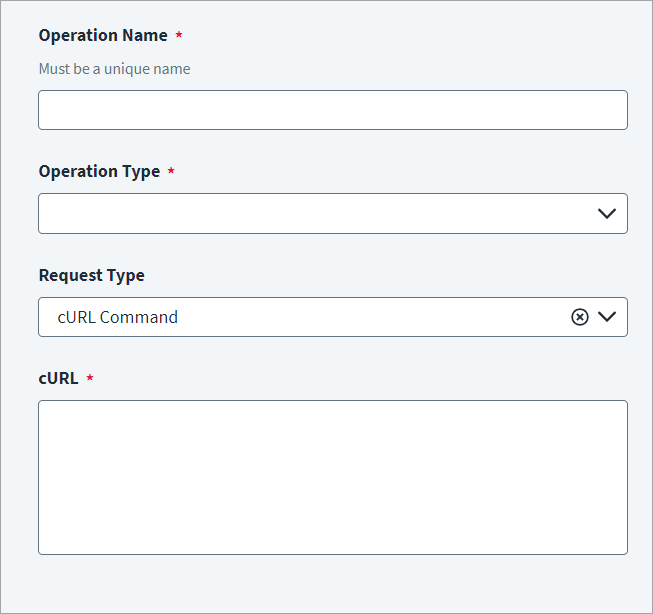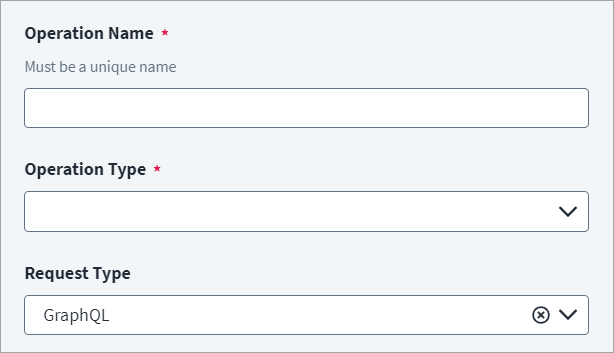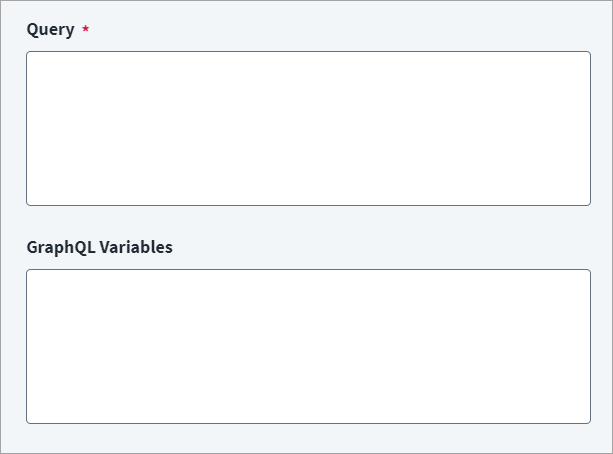General Information
Enter basic configuration information for the HTTP operation.
-
In the Operation Name field, enter a unique name for the operation that you want to execute. You can change the name of an operation later if needed.
Note
SailPoint recommends that you create a unique name for the operation to help you distinguish it from other operations. For example, if you have two account aggregation endpoints for your source, you can name them "Account Aggregation-1" and "Account Aggregation-2". -
In the Operation Type drop-down list, select the name of the operation that you want to execute.
Note
You must configure a Partitioned Account Aggregation operation to support partitioning for static and dynamic. Additionally, to support dynamic partitioning you must also configure a Get Partition operation. -
Select the Request Type from the drop down.
If your configuration requires cURL, refer to Add an Operation with cURL.
If your configuration requires GraphQL, refer to Add an Operation with graphql.
-
In the Context URL field, enter the authentication (Context) URL specific to your operation. The connector appends the context URL to the source's Base URL. This can be empty depending on the endpoint of the Managed System.
For example:
/2/team/members/list
Below are the few keywords that will be used in the Context URL along with the placeholder
$:-
plan -
response -
application -
getobject -
authenticate
To configure the Context URL as a velocity operation, wrap the operation with
$$. For example:/2/team/members/list/$$response.data.length$$
-
-
In the HTTP Method field, select the appropriate method from the drop-down list. HTTP method is supported by the respective operation. For example, you can select GET, PUT, POST, DELETE, or PATCH.
-
Select Save.
Add an Operation with cURL
If you select cURL Command as the Request Type, the options for Context URL and HTTP Method are removed, and you only need to provide the cURL command.
The endpoint cURL command for an operation that contains the complete request URL, HTTP Method, Header, and Body are provided in the following example:
curl --location --request POST 'https://api.dropbox.com/2/team/members/list' \
--header 'Authorization: $application.accesstoken$' \
--header 'Content-Type: application/json' \
--data-raw '{"limit":1}'In this example, consider the following:
-
complete request URL:
https://api.dropbox.com/2/team/members/listNote
The URL must be inhttp://orhttps://format. You can add a placeholder URL, but it must havehttp://orhttps://in the beginning of the URL string. You can't use a placeholder URL on its own. -
HTTP Method:
POST
--header 'Authorization: $application.accesstoken$' \
--header 'Content-Type: application/json' \
-
Header
-
Body:
--data-raw '{"limit":1}'
Add an Operation with GraphQL
If you select GraphQL as the Request Type, the options for Context URL and HTTP Method are removed, and you only need to provide the Query and GraphQL Variables
The GraphQL for an operation which contains query and variables is provided in the following example:
Query
query ListOrganizationMembers($org: String!, $cursor: String, $first: Int = 100) {
viewer {
organization(login: $org) {
viewerIsAMember
viewerCanCreateTeams
membersWithRole(after: $cursor, first: $first) {
totalCount
edges {
node {
login
name
id
email
databaseId
}
}
}
}
}
}Variables
{
"org": "sailpoint-sandbox"
}In this example, consider the following:
-
The URL is constant throughout the system.
-
The HTTP Method will always be POST.
-
GraphQL supports cursor-based pagination.



